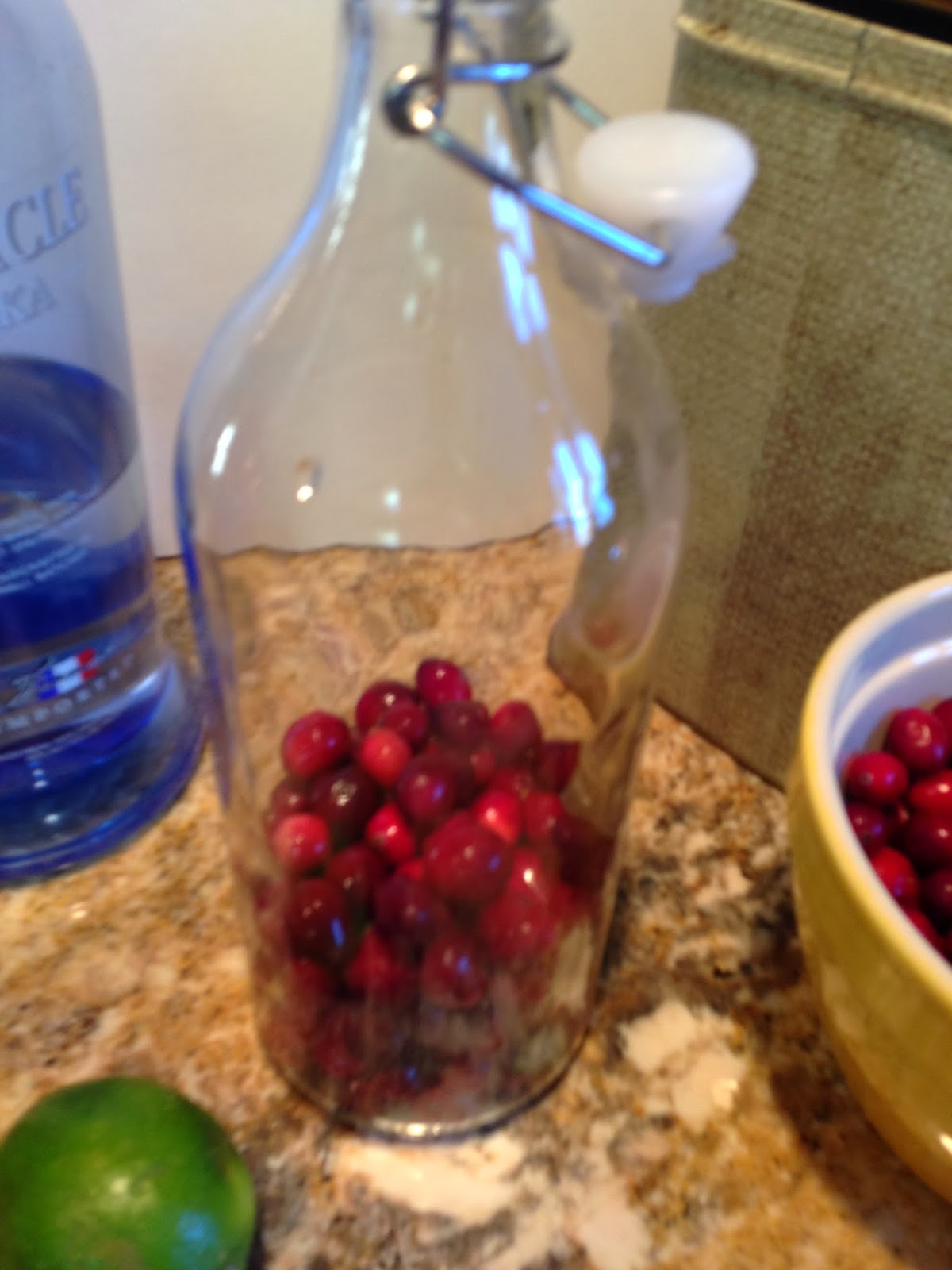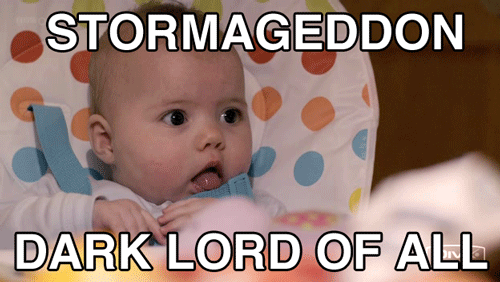Want to make your own? Here it goes...
What you need:
-1 bag of cranberries per bottle
-2-3 limes per bottle (I used 3 per bottle because I wanted more green to show)
-Vodka of your choice (you will use approximately 2 1/4- 1/2 cups per infused bottle)
-Sugar
-Bottles: I found mine at IKEA (sterilize using hot water)
-Holiday music (optional)
Start by turning on your holiday music! I enjoyed listening to the album "The Puppini Sisters- Christmas with the Puppini Sisters" as I worked.
Using a sharp knife, poke a hole in each cranberry. Yes, I know it sounds like a lot of work, but it seriously takes no time at all.
Fill the jar 1/3 full with cranberries. Next, using a knife, peel off the rind of one lime in long strips and place it in the jar. Top with another layer of cranberries, then more lime rind. Finish filling the jar with cranberries. I had 3 layers alternating with cranberries and limes.
Next, you will want to add a bit of sugar to cancel out the bitterness of the cranberries. You don't want to make the vodka too sweet so add slightly less than 2 TBSP of sugar (less if you have a small jar). I used a funnel to pour in the sugar.
Again, using the funnel, pour the vodka into the jar. I first measured 2 cups and poured in. Then added another 1/4th cup. You may need to add up to a total of 2 1/2 cups to fill the jar. Seal the jar, then give it a good shake.
Be sure to give the jar a good shaking every day or two to make sure that the sugar is mixed throughout. You can let your infused vodka sit anywhere from 2 weeks to 2 months. The longer you leave it, the sweeter it will be.
You can use your Cranberry Lime Vodka in some delicious mixed drinks or serve mixed with club soda.
Gifting: Add a cute gift tag with a cocktail recipe (see below). You may even want to include a shaker and a fun martini glass! I noticed some cute shakers in the dollar bins at Target.
Crantini
1/2 oz. Triple Sec
1 1/2 oz. Cranberry-Lime Vodka
4 oz. Cranberry Juice
1 tbsp Frozen Limeade Concentrate {optional}
Mix together in a martini shaker & shake well.
Serve in a martini glass, garnished with cranberries & lime zest.
Enjoy!
Allons-y!
The Girls of Gallifrey
























































